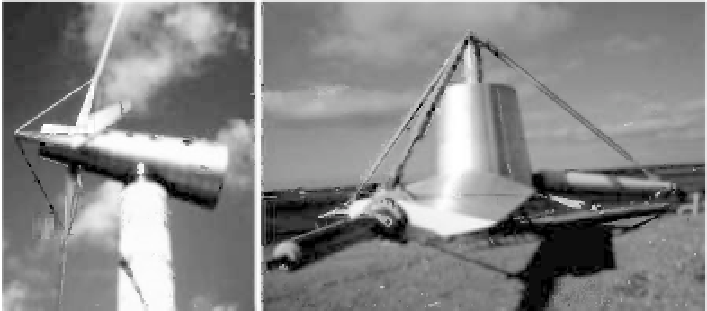Environmental Engineering Reference
In-Depth Information
successful solutions were the exception. This can be illustrated by
two early Danish blade development projects. A single detail in
this comparison between the state's two 630 kW Nibe wind
turbines A and B, and the Tvind windmill, shows how the two
projects solved this challenge.
Nibe A had a rotor of fibreglass combined with some
sophisticated welded steel constructions, which could not be
verified in relation to the alternating loads of the rotor. Nibe B was
less clumsy; it had an inner beam, but that did not last long either,
despite a generous and costly efort of the development. Some
years later, both Nibe A and B were provided with wooden blades,
which after being damaged by lightening, were later replaced by
fibreglass blades.
Figure 7.44
One of the Nibe windmills (A)
got a rotor of fibreglass in com-
bination with some very ingenious welded steel structures,
which in fact could not be verified.
At one OVE wind energy workshop, VindTræf, in November
1976 the idea of the independent blade production for the later
component windmill was presented. A number of wind groups
were formed, of which one focused on fibreglass blades. Here I
suggested that “Twenty windmill builders should join to invest
and build a mould, for example, for an 8 m blade.” In the group were
among others Rio Ordell, Erik Grove-Nielsen, Jens Gjerding, Claus
Nybroe and Peter Andersen, all to become important pioneers of
wind energy.
Jens Gjerding from Tvind did not hesitate. They did not make
an 8 m blade but a downsized 4.5 m version of the big windmill's



Search WWH ::

Custom Search